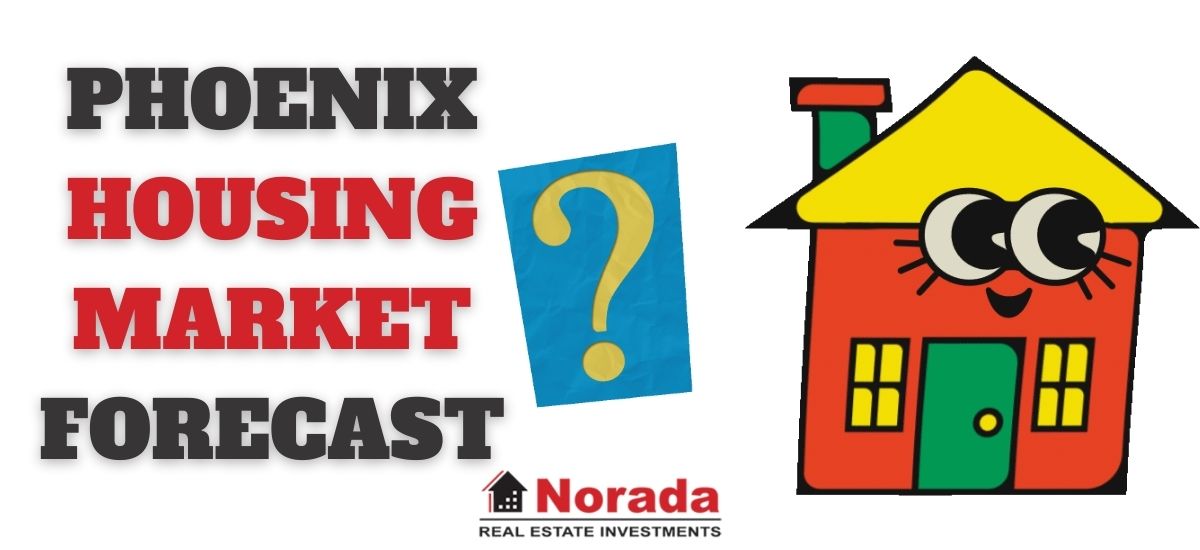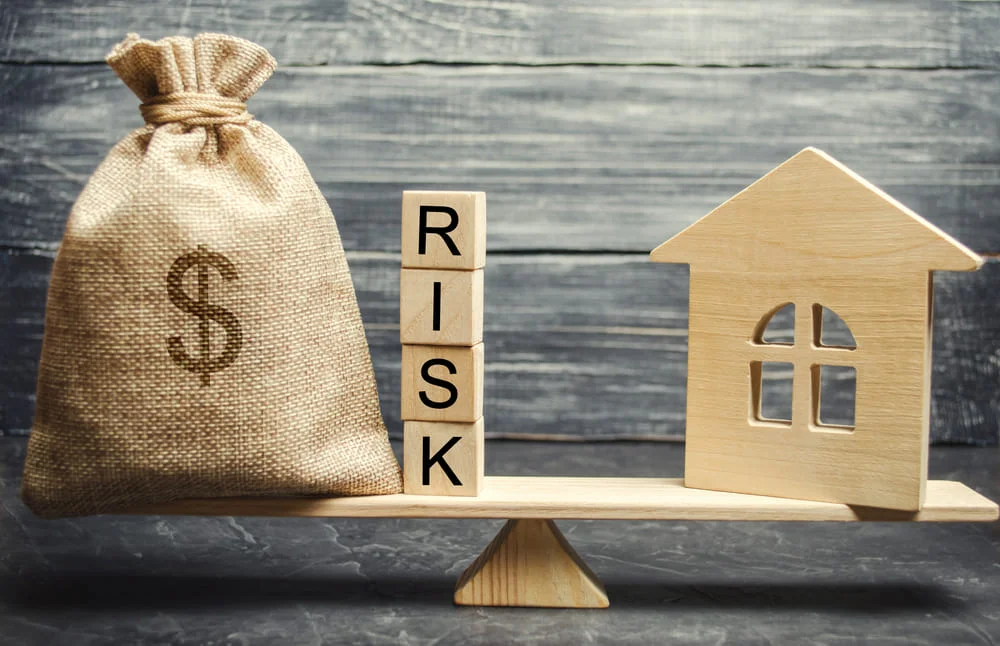Thinking of buying or selling a home in the Phoenix area? You're probably wondering about the current Phoenix housing market trends. Right now, things are shifting. While prices have seen some increases over the past year, the market is showing signs of balancing, with rising inventory giving buyers more options. Let's dive into the details.
Current Phoenix Housing Market Trends:
Home Sales
Home sales in the Phoenix metro area have been a bit of a mixed bag. While month-to-month numbers can fluctuate, it's important to look at the bigger picture. We're seeing a slight increase in median sales prices compared to last year, indicating continued demand.
Based on the latest data from ARMLS for February 2025, the median sales price is $455,000. This is a modest increase of 1.11% from the previous month ($450,000) and a 3.41% increase from the same time last year ($440,000). It suggests that buyers are still active, but the pace of price increases has slowed.
Home Prices
Let's break down what's happening with home prices in Phoenix. There are a few different ways to look at this:
- Average Sales Price: According to ARMLS, the average sales price in February 2025 was $615,090.
- Median Sales Price: As mentioned earlier, the median sales price was $455,000.
- Average Price per Square Foot: The average price per square foot is a good indicator of value. For February 2025:
- Overall Average $/SF: $311.39
- Single Family Homes Average $/SF: $309.80
- Condo Average $/SF: $289.23
- Townhouse Average $/SF: $305.68
The median price per square foot has increased by 1.98% for condos, 0.95% for single-family homes, and 1.86% for townhouses compared to last year.
Are Home Prices Dropping?
This is the million-dollar question! While we're not seeing a widespread crash in home prices, there are signs of moderation. According to the data, the median sales price has seen only a slight increase compared to last month. Also, the overall average $/SF has increased only by 0.16%.
Instead of dropping significantly, prices are more likely stabilizing or experiencing more gradual adjustments. This is a welcome change for buyers who have been facing fierce competition and rapidly rising prices in recent years.
Comparison with Current National Median Price
It's always helpful to compare the Phoenix market to the national picture. The current national median price is $396,900 (January 2025), with a Year-over-Year Change of +4.8%. This means that Phoenix's median home price is higher than the national median. Phoenix is still a desirable area, which supports higher values.
Housing Supply
One of the biggest factors influencing the market is housing supply. For a long time, Phoenix has suffered from a severe shortage of homes for sale. This drove up prices and created a hyper-competitive environment for buyers.
The good news is that housing supply is increasing. Let's look at the numbers:
- Total Listings (All Areas): 23,699
- Single-Family Listings: 10,209
- Condo Listings: 5,638
- Townhouse Listings: 7,921
Compared to last year, the total number of listings has jumped by 45.60%. Single-family listings increased by 16.08%, condo listings by 0.70%, and townhouse listings decreased by -0.16%.
This increase in inventory gives buyers more choices and reduces the pressure to make quick decisions.
Is Phoenix a Buyer's or Seller's Housing Market?
This is a key question. For a long time, Phoenix has been firmly in seller's market territory. This means that there were more buyers than homes available, giving sellers the upper hand.
- Supply: 4.2 months
A balanced market is typically around 6 months of supply. Phoenix is still below that, but the increase in supply indicates that we are moving towards a more balanced market.
What does this mean for you?
- If you're a seller: You might not get as many offers as you would have a year ago, and you might need to be more flexible on price.
- If you're a buyer: You have more options and more time to make a decision.
Market Trends
Beyond the numbers, there are some other important market trends to keep in mind:
- Days on Market (DOM): The average Days on Market (DOM) is the average number of days that listings stayed on the market. For February 2025, the Average DOM is 81, and the Median DOM is 59.
- Absorption Rate: The absorption rate measures how quickly homes are selling. A higher absorption rate means a faster-moving market. For February 2025, the absorption rate is 23.79%.
- List Price vs. Sales Price: The difference between the list price and sales price can tell you how much negotiating power buyers have.
Here is a summary table for easy reference:
| Metric | Current Value (Feb 2025) | 1 Month Prior | 1 Year Prior |
|---|---|---|---|
| Median Sales Price | $455,000 | $450,000 | $440,000 |
| Average Sales Price | $615,090 | $616,298 | $570,243 |
| Total Listings | 23,699 | 22,233 | 16,277 |
| Supply (Months) | 4.20 | 4.81 | 2.91 |
| Absorption Rate (%) | 23.79% | 20.78% | 34.40% |
| Average Days on Market | 81 | 83 | 70 |
| Median Days on Market | 59 | 64 | 50 |
Impact of High Mortgage Rates
One of the biggest headwinds facing the housing market is high mortgage rates. As of early March 2025, the average 30-year fixed mortgage rate is around 6.63%, according to Freddie Mac.
This is significantly higher than the rates we saw a few years ago, which means that it costs more to borrow money to buy a home. This can impact affordability and cool demand.
Most forecasts are predicting rates to remain at or slightly above this level.
My Thoughts: The Phoenix housing market is definitely evolving. While prices are still up year-over-year, the increase in inventory and the impact of higher mortgage rates are creating a more balanced market. Buyers have more choices and more negotiating power, while sellers need to be realistic about pricing.
Phoenix Housing Market Forecast 2025-2026
Before we dive into the forecast, it's important to understand the current state of the Phoenix housing market. Phoenix, Arizona has experienced phenomenal growth in recent years, driven by a multitude of factors.
The city's population has grown rapidly. From 2010 to 2020, the population increased by 11.2% to 1.6 million people. Between 2020 and 2023, it grew another 4%, adding nearly 200,000 residents. As of 2024, the population is estimated to be over 4.7 million, reflecting a 1.27% increase from 2023. This surge in population is due to factors such as:
- Job Opportunities: Phoenix has experienced strong job growth across diverse sectors. The expanding economy has attracted individuals and families seeking new career opportunities.
- Remote Work: The rise of remote work has also contributed to the influx of new residents. Many people are moving from more expensive areas to enjoy a better quality of life and lower cost of living, while still retaining their jobs in other parts of the country.
- Exurbs: The Census Bureau has noted a significant growth in exurbs surrounding major metropolitan areas, and Phoenix is no exception. This trend, likely fueled by increasing housing prices and the ability to work remotely, is contributing to the expansion of the Phoenix metropolitan area.
What the Experts Predict: A Look at the Numbers
As of now, the average home value in the Phoenix-Mesa-Scottsdale area sits around $449,464 according to Zillow. That's a slight dip of 0.1% over the past year. Homes are also staying on the market a bit longer, with properties going to pending in about 38 days. This indicates a shift towards a more balanced market, giving buyers a little more breathing room.
Let's break down the Phoenix housing market forecast using the latest data available from Zillow. These predictions paint a picture of gradual growth in the coming months.
Here's a simplified version of their projections:
| Timeframe | Projected Home Value Change |
|---|---|
| February 2025 | -0.1% |
| April 2025 | 0.1% |
| January 2025 – January 2026 | 1.4% |
What does this mean?
- Short-Term Fluctuations: We might see some minor ups and downs in the immediate future, but nothing drastic.
- Overall Growth: The longer-term outlook suggests a modest increase of 1.4% over the next year.
Phoenix vs. Other Arizona Markets: A Comparative View
It's always helpful to see how Phoenix stacks up against other cities in Arizona. Here's a quick comparison:
| City | Feb 2025 | Apr 2025 | Jan 2026 (1-Year Forecast) |
|---|---|---|---|
| Phoenix, AZ | -0.1% | 0.1% | 1.4% |
| Tucson, AZ | -0.2% | -0.2% | 1.1% |
| Lake Havasu City, AZ | 0% | 0.2% | 0.8% |
| Yuma, AZ | 0.2% | 0.9% | 3.3% |
| Flagstaff, AZ | 0.4% | 1.3% | 3.9% |
As you can see, Phoenix is expected to perform relatively in line with Tucson, but lower than other regions such as Yuma and Flagstaff, according to current projections. These other markets are seeing higher expected growth which may be because they have smaller population bases than Phoenix.
Will Phoenix Home Prices Drop or Crash?
This is the question on everyone's mind! Based on the data and my understanding of the market, a major crash seems unlikely. While a significant drop is not anticipated, some areas may experience price adjustments depending on factors like inventory levels and local demand.
My Thoughts and Predictions for 2026
Predicting the market beyond a year is always tricky, but here's my take:
- Continued Growth: Assuming the economy remains stable, I expect a continued, albeit moderate, upward trend in Phoenix home prices into 2026.
- Factors to Watch: Keep an eye on interest rates, inflation, and job growth in the Phoenix area. These will be key indicators of market health.
- Location Matters: As always, location will play a big role. Some neighborhoods will likely see stronger appreciation than others.
Final Thoughts
The Phoenix housing market is in a period of adjustment. While the days of rapid price increases seem to be behind us, a steady, gradual growth appears to be on the horizon. It's a good time to do your research, consult with a local real estate professional, and make informed decisions based on your individual circumstances.
Should You Invest in the Phoenix Real Estate Market?
Investing in real estate is a significant decision that requires careful consideration of various factors. It's safe to say that Phoenix is currently a great place for both buyers and sellers. As a buyer, however, it's essential that you evaluate all your options carefully and try to negotiate a better price if possible. The Phoenix Metropolitan Statistical Area (MSA) has been a popular choice for real estate investment due to several compelling reasons supported by factual data:
1. Strong Population Growth
The Phoenix MSA has consistently experienced robust population growth. According to the U.S. Census Bureau, Phoenix was one of the fastest-growing cities in the United States. The increasing population creates a steady demand for housing, making it an attractive market for real estate investment.
2. Thriving Job Market
Phoenix boasts a diverse and thriving job market. The city has become a hub for various industries, including technology, healthcare, manufacturing, and finance. Employment growth stimulates demand for housing, which is a key driver for real estate investment. As of the latest available data, the unemployment rate in the Phoenix MSA is relatively low compared to the national average, indicating a stable job market.
3. Favorable Economic Environment
Phoenix offers a business-friendly environment, attracting corporations and entrepreneurs. The favorable economic conditions contribute to a strong real estate market. According to data from the Greater Phoenix Economic Council, the region has seen consistent economic growth, supporting real estate development and investment.
4. Affordable Housing Market
Compared to other major cities in the United States, the Phoenix MSA offers relatively affordable housing options. The cost of living and housing prices, although rising, is still attractive when compared to cities like Los Angeles, San Francisco, or New York. This affordability makes it appealing to both buyers and renters, increasing the potential for return on investment.
5. Tourism and Lifestyle Appeal
Phoenix is a popular tourist destination, attracting visitors throughout the year. The tourism industry contributes to the demand for short-term rental properties, making it a lucrative venture for real estate investors. Additionally, the city's favorable climate and lifestyle amenities make it an appealing location for both residents and investors.
6. Infrastructure and Development
The Phoenix MSA has witnessed substantial infrastructure development to accommodate its growing population and economy. Investments in transportation, education, healthcare, and other amenities enhance the overall quality of life, making the region more attractive for real estate investment.
Considering these factors, the Phoenix Metropolitan Statistical Area presents a compelling opportunity for real estate investment. However, it's essential to conduct thorough market research, consult with real estate professionals, and assess your investment goals before making any investment decisions.
7. Strong Demand for Rental Properties
Phoenix has experienced a significant influx of residents in recent years, driven by factors such as job opportunities, affordable living, and a desirable climate. Many newcomers initially opt for rental housing, creating a robust demand for rental properties. This demand is projected to continue as the population grows.
Rental rates in Phoenix have been steadily rising due to the high demand for rental properties and the overall growth of the area. While still more affordable than some major cities, rental rates have seen a notable increase, providing a potential for a favorable return on investment for property owners.
Phoenix's lower cost of living and relatively affordable rental rates compared to major cities make it an attractive option for individuals and families looking to rent. The affordability factor contributes to the sustained demand for rental properties in the area.
Recommended Read:
- Arizona Housing Market: Trends and Forecast
- 12 Best Places to Live in Arizona
- When Will the Housing Market Crash in Arizona?
- Arizona's Housing Crisis: Young Adults Struggling to Find Home
- Scottsdale Housing Market: Trends and Forecast
- Tucson Housing Market Trends and Forecast
- Top 10 Priciest States to Buy a House by 2030: Expert Predictions
- 10 Best Real Estate Markets for Investors in 2025





